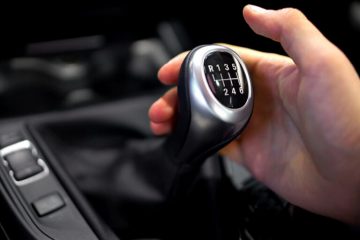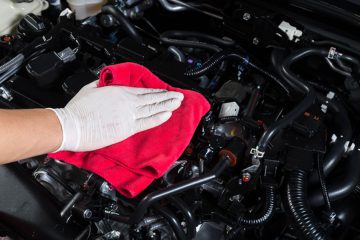The clutch is that part of your vehicle that controls the slippage between the engine and the transmission. The vehicle’s wheels don’t spin when the engine does, so the function of the clutch is to let the wheel disconnect from the engine. This will allow the driver to change gears and the car to stop without killing the engine. Here are a few tips, tricks and some timesavers that you need to know about the clutch.
- It you overheat the clutch, it can critically weaken the flywheel. If you observe a cooked clutch, you must remove the flywheel and have it Magnafluxed in order to ensure that there would not be any radial or any other cracks leading away from the bolt holes.
- The input shaft splines should be able to freely slide back and forth when you test the new disc. If this does not happen, a rust or a small nick may be hanging it up. You can use a fine hand file or emery cloth to get rid of an of those small nicks or burrs in the input shaft splines or clutch hub.
- You must test fit the pressure plate of the flywheel prior to the final assembly to recognize any interference problems or binding on the locating dowels.
- Remember that a curved face throw-out bearing must always be used with straight pressure plate levers; and conversely, a flat-faced throw-out bearing must always be used with curved pressure plate levers.
- The flywheel must be smooth and flat for the clutch disc to have the appropriate grip. If there are visible signs of scoring, uneven wear or burn marks, you should have the flywheel resurfaced. A light cut can be taken off the face and result in a much better performance.
- Keep in mind to mark the location of the flywheel at all times before unbolting. This helps you to reinstall it in the exact same position, and it is very important to maintain engine balance on some applications.
- Each time you have a flywheel resurfaced, you must check the mounting hole counterbore depths. Removing too much material leads to the pressure plate mounting bolts to run out of thread. Then, the pressure plate cover won’t be pulled down solidly against the flywheel. Double checking is key.
- If the flywheel has not been removed, it is always a good idea to re-torque the mounting bolts in a crisscross pattern according to your vehicle manufacturer’s specifications.
- Before reassembling the clutch, the flywheel and pressure plate must be carefully cleaned with a non-petroleum based solvent, and then dried with compressed air. Do not use wiping cloth or rags in drying the parts.
- Use a high-temperature grease to lightly coat the input shaft splines, clutch hub, and throw-out bearing hub and face. This will help you make sure that everything is working smoothly.
- It is necessary to use proper alignment tools, and if you do not have one yet, avoid blind-guessing to line up the clutch with the pilot bearing. Otherwise, you will spend a long time trying to force the transaxle into a misaligned clutch.
- Make sure to install the disc in the correct direction with the hub assembly away from the flywheel.
- Upon installation, the pressure plate mounting bolts finger must be locked-in tight. Then, torque them gradually in a crisscross pattern to keep the pressure even around the circumference of the pressure plate.
- Use new high-strength fasteners and lock washers at all times in changing a clutch assemble and a thread lock in order to help the bolts avoid working loose.
- Check the release lever for any wear or misalignment. Then, remember to lubricate the clutch release lever contact points and pivot before the final assembly.
- Don’t allow the weight of the transmission to hang from the disc. Make sure that the engine and transmission are fully mated together before you relieve the transmission support.
- If you have any doubt about any component, it is wise to consider replacement. If you keep using or re-using a damaged part like a pilot bearing or a throw-out bearing, it will only cost you more in the future.
Finally, always test drive a new clutch job before delivery to make sure that everything is operating properly.
If you would like to purchase high quality car components with great discounts, check out our website at autopartsway.com.


